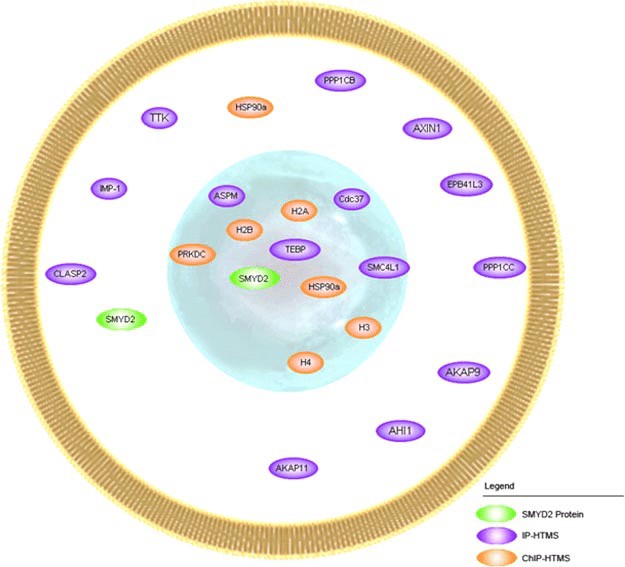What is SMYD2 Protein?
Background and Discovery of SMYD2 Protein
SMYD2 protein is a member of the SET and MYND domain containing (SMYD) family which was initially discovered in 2004 in a study on cardiovascular diseases. Since its discovery, SMYD2 has piqued the interest of many within the scientific and biomedical communities due to its unique attributes, structure, and its role in various physiological and pathological processes.
Centered on its biochemical fundamentals, the SMYD2 gene is located at locus 1q32.3 on chromosome 1. The protein encoded by this gene, SET and MYND Domain Containing 2 (SMYD2), comprises 433 amino acids. The SMYD2 protein structure includes the SET (Su(var)3-9, Enhancer-of-zeste and Trithorax) domain, the MYND (Myeloid-Nervy-DEAF1), and two zinc finger motifs. The SET domain is responsible for the protein's methyltransferase activity, while the MYND domain is involved in protein-protein interactions.
What Is The Function of SMYD2 Protein?
The function of the SMYD2 protein is pivotal in the realm of biological processes. It acts primarily as a histone methyltransferase, which catalyzes the transfer of methyl groups to specific substrates, including histones, leading to gene expression changes. It mainly modifies histone H3 at lysine 36 (H3K36), which is correlated with transcriptional activation. Nonetheless, it's worth noting that SMYD2 does not solely methylate histones. It also methylates non-histone proteins such as p53, retinoblastoma protein (Rb), estrogen receptor α (ERα), and heat shock protein 90 (Hsp90), an activity that broadens the functional impact of SMYD2 within the cell.

Fig1. SMYD2 protein-protein interaction partners with their cellular localization
SMYD2 protein related signal pathway
Given the protein's function, SMYD2 is intricately linked to the signaling pathway. It primarily participates in the p53 signaling pathway which plays a pivotal role in the regulation of cell cycle, apoptosis, senescence, and DNA repair. By methylating and thus suppressing the function of p53, SMYD2 indirectly impacts multiple cellular processes controlled by the p53 pathway.
SMYD2 protein related diseases
The dysregulation of SMYD2 protein has been tied to several diseases, with the most significant being cancer. Numerous studies have indicated an overexpression of SMYD2 in various types of cancers, including esophageal squamous cell carcinoma, gastric cancer, breast cancer, hepatocellular carcinoma, and bladder cancer. Overexpression of SMYD2 protein is associated with advanced tumor stage, lymph node metastasis, and poor prognosis in cancer patients. Additionally, SMYD2 has also been implicated in cardiovascular diseases, such as hypertrophic cardiomyopathy due to its role in heart development.
SMYD2 protein's applications in biomedical
In light of the apparent connection between SMYD2 and disease, it has become a significant focus in biomedical research and applications. Its overexpression in cancer makes it a potential therapeutic target. Inhibitors targeting SMYD2 can potentially be used to inhibit cancer cell growth and proliferation. Various SMYD2 inhibitors have shown promising results in preclinical studies, and some of them are currently undergoing clinical trials. Furthermore, SMYD2 may also prove useful as a diagnostic marker for certain types of cancers due to its overexpression in tumor tissues.
However, alongside its biomedical applications, the comprehensive understanding of SMYD2 in biological contexts extends beyond disease. Particularly, the study of SMYD2 gives insights into our understanding of the complex regulation of gene expression, which is a fundamental aspect of biology and could potentially impact wide-ranging fields from developmental biology to neurology.
In summary, SMYD2 protein is a histone methyltransferase that plays a critical role in gene regulation and is intricately linked to the p53 signaling pathway. Its dysregulation can contribute to various diseases, particularly cancer, and it is being explored for its potential as a diagnostic marker and therapeutic target. As our knowledge and understanding of this complex protein continue to grow, so too will its impact on biomedical science.
Our Featured Products
| Cat.No. | Product Name | Species | Source (Host) | Tag |
|---|---|---|---|---|
| SMYD2-2828H | Recombinant Human SMYD2, His-tagged | Human | E.coli | His |
| SMYD2-262H | Recombinant Human SMYD2 protein, GST-tagged | Human | E.coli | GST |
| MYD2-27745TH | Recombinant Human SMYD2 | Human | Sf9 Insect Cell | N/A |
| SMYD2-2063H | Recombinant Human SMYD2 Protein, MYC/DDK-tagged | Human | HEK293 | Myc/DDK |
| SMYD2-019H | Active Recombinant Human SMYD2 Protein, His/SUMO-tagged | Human | E.coli | His/SUMO |
| SMYD2-15656M | Recombinant Mouse SMYD2 Protein | Mouse | Mammalian Cell | His |
| SMYD2-8507M | Recombinant Mouse SMYD2 Protein, His (Fc)-Avi-tagged | Mouse | HEK293 | His (Fc)-Avi |
Reference
- Abu-farha, Mohamed & Lambert, Jean-Philippe & Al Madhoun, Ashraf & Elisma, Fred & Skerjanc, Ilona & Figeys, Daniel. (2008). The Tale of Two Domains: Proteomics and Genomics Analysis of SMYD2, A New Histone Methyltransferase. Molecular & cellular proteomics : MCP. 7. 560-72. 10.1074/mcp.M700271-MCP200.

